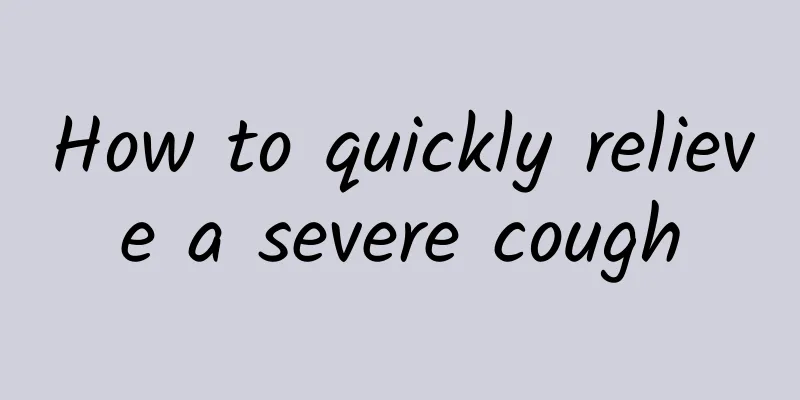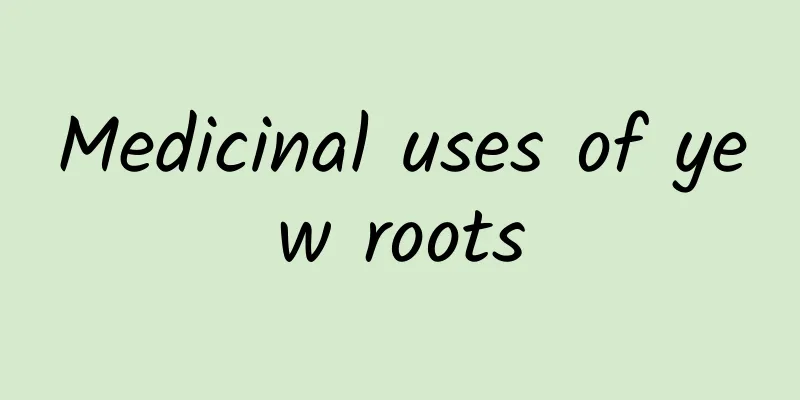Causes of hemoptysis due to bronchiectasis, severe cases require treatment

|
The most common cause of hemoptysis is bronchiectasis. Bronchiectasis is a chronic respiratory disease. Coughing and sputum are also chronic. The most typical manifestation is repeated hemoptysis. As long as bronchiectasis is not cured, it will cause hemoptysis and must be treated promptly. 1. Causes of hemoptysis due to bronchiectasis Bronchiectasis is the most common cause of hemoptysis. There are small arteries accompanying each bronchus. Bronchiectasis causes the bronchus to twist and deform, and the corresponding small arteries next to it will also be deformed. Hemoptysis can be induced by many factors such as inflammation or severe coughing. Therefore, as long as bronchiectasis exists, hemoptysis may occur. 2. Bronchodilator treatment 1. General treatment Treatment includes infection control, bronchodilators, and aggressive physical therapy. Physical therapy includes postural drainage, patting the back several times a day, breathing exercises, and education on respiratory health principles. Use moisturizers and expectorants to increase mucus mobility, and reduce exposure to irritants. Treat related diseases such as sinusitis, gastroesophageal reflux, immunoglobulin deficiency, etc., and get vaccinated against whooping cough, measles and influenza every year. 2. Treatment of hemoptysis Hemoptysis is a common symptom of bronchiectasis and a major life-threatening condition. Hemoptysis often has no clear cause and is not necessarily associated with other symptoms such as fever and coughing up pus and sputum. Small amounts of hemoptysis can usually be stopped by rest, sedatives, and hemostatics. Bronchial artery embolization can be performed for massive hemoptysis. Check with bronchoscope (hard endoscope is preferred), inject ice water locally, and block with thin gauze or Fogarty tube. 3. Surgery (1) Indications for surgery: ① Localized lesions with obvious symptoms or recurrent lung infections are the main indications. Surgery can completely remove diseased lung tissue and achieve good results. ② If there are lesions on both sides and the symptoms mainly come from the side with the most severe disease, the severe side can be resected. If the lesions on the other side still have symptoms after surgery, drug treatment can be used. ③ If there are localized and severe lesions on both sides, such as severe hemoptysis, the more severe side should be removed first. If the lesion on the other side is stable, observation and medical treatment should be carried out. If the lesion progresses, resection should be carried out. ④ In case of severe hemoptysis without bronchial angiography and the location and extent of the lesion are unclear, most cases can be treated with bronchial artery embolization to stop the bleeding and then undergo elective surgery. If there has been bronchography and the lesion is clear, emergency resection can be performed. ⑤ If there are extensive lesions on both sides, the patient's general condition and lung function continue to deteriorate, medical treatment is ineffective, and the estimated survival time is no more than 1 to 2 years, and the patient is under 55 years old, bilateral lung transplantation surgery can be considered. (2) Design of surgical plan: ① If the lesion is localized and other parts are normal, a segment or the entire lung can be removed. The most commonly removed parts are the left lower lobe plus the lingular segment, the left or right lower lobe, and the right middle lobe. ② If there is a lesion in the basal segment of the lower lobe, a single basal segment is generally not removed because the boundary between segments is not clear and the size of each basal segment is not large. If it is separated with difficulty, the retained lung function is limited and the complications are significantly increased. If the dorsal segment is normal, the dorsal segment can be preserved. ③ If the sublingual segment is affected but the supralingual segment is not involved, the sublingual segment can be removed alone. ④ For bilateral lesions, if both are relatively localized, the patient is young and in good general condition, they can be removed simultaneously using bilateral anterior chest incisions, or sequentially using bilateral lateral incisions. If it is not allowed under normal circumstances, do it on one side first, and then do it on the other side after 3 to 6 months. The length of the interval depends on the physical recovery. Some patients may not be able to do contralateral surgery due to complications on the operated side or severe lung function damage. |
<<: What to do about silicosis? Treatment and prevention should be emphasized
>>: How to treat sleep apnea syndrome? Classification treatment is effective
Recommend
What are the effects of Prazone tablets
Fiprazon tablets are a common medicine in life. T...
Why is a 40-year-old woman losing her hair?
Hair loss is relatively common in women in their ...
Can Scraping the Head Promote Hair Growth?
In modern society, many people work at a fast pac...
Benefits of pickled cucumbers in vinegar
In daily life, vinegar and cucumber are two very ...
Can bone callus grow after a fracture for a month?
A question that many friends are concerned about ...
Can diabetics drink soy milk?
Soy milk is a common food in daily life. Soy milk...
The efficacy and function of Sophora japonica root
Chinese medicinal materials have always been trea...
What does bone growth need? These are essential
Children's bones need many nutrients during t...
How much does a six month old fetus weigh?
When a pregnant woman is about six months pregnan...
Pregnancy sex positions
Here I want to emphasize to everyone that regardi...
Does fermented black beans reduce milk production?
Fermented black beans should be common in our dai...
The effect of reed root water
There are many scenes of reed marshes in the movi...
Causes and prevention of genital herpes
Genital herpes HSV infection occurs about 4 to 5 ...
Is Chinese herbal whitening and anti-freckle cream really effective?
With the development of modern technology, more a...
Soak your feet in salt at night, and a miracle will happen when you wake up the next day
Everyone knows that foot soaking has many benefit...









